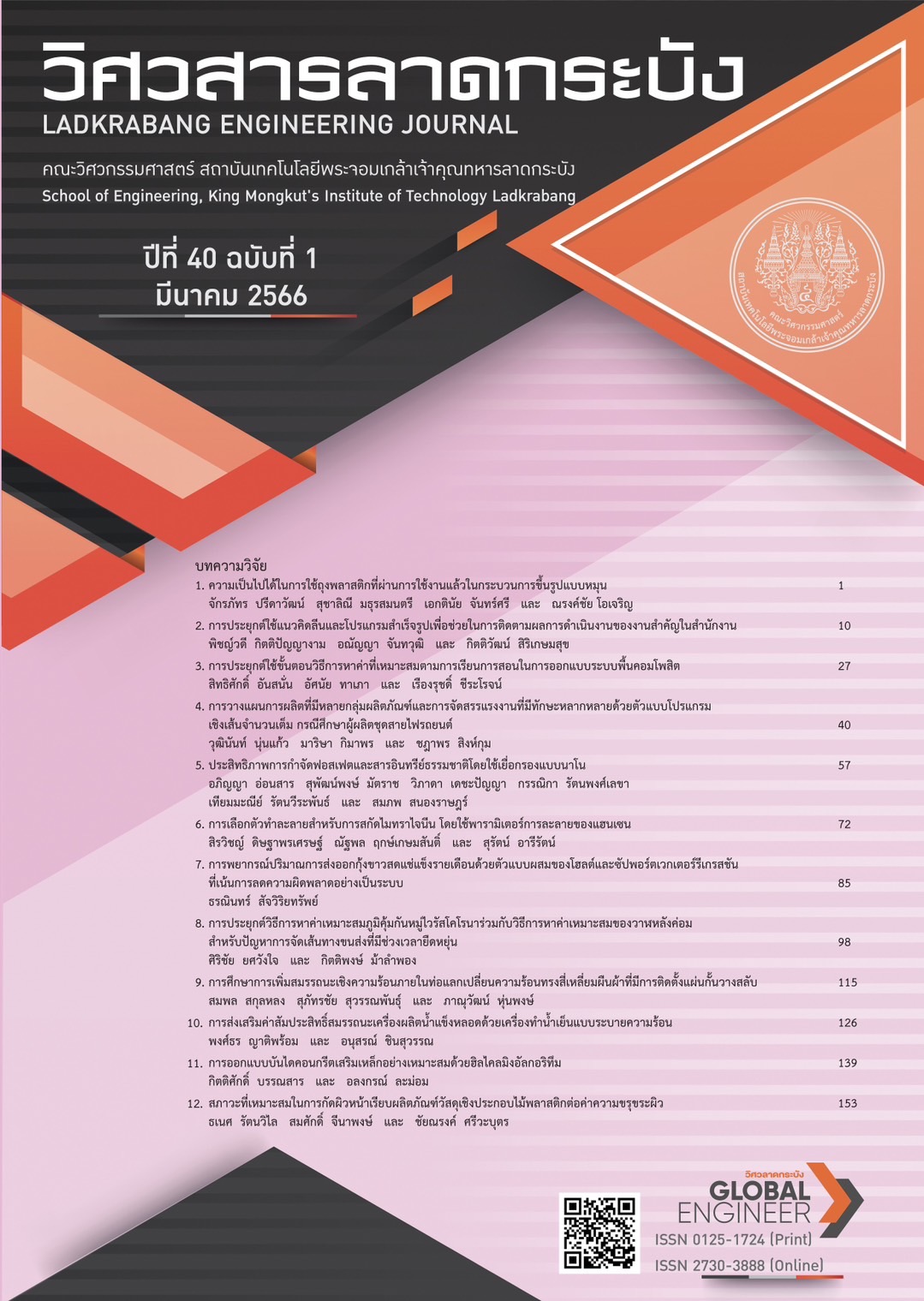Application of Teaching–learning-based optimization for design of composite floor system
Keywords:
Teaching learning based optimization, Design of composite floor system, Optimum designAbstract
Composite floors are widely used in building structures due to their economy, but an economical design of composite floors is rather difficult and complicated. Therefore, this research presents the application of Teaching–Learning-Based Optimization (TLBO) to design the optimum of composite floor system according Load and Resistance Factor Design method (LRFD) by AISC standard. This design algorithm is developed using Visual basic language to determine the lowest total cost of structures. The efficiency of the TLBO for search the optimal solution is tested by three composite floor examples from the literature. The test results show that the TLBO answer converges quickly to the optimal solution with fewer function evaluations compared to other algorithms and the TLBO found the optimal solution better than the compared research in the range of 0.61–14.9%
References
A. Kaveh and M.Ahangaran, “Discrete cost optimization of composite floor system using social harmony search model,” Applied Soft Computing, vol. 12, no. 1, pp. 372–381, 2012, doi: 10.1016/j.asoc.2011.08.035.
A. Kaveh and M.S.Massoudi, “Cost optimization of a composite floor system using ant colony system,” Iranian Journal of Science and Technology, Transactions of Civil Engineering, vol. 36, no. 2, pp. 139–148, 2012, doi: 10.22099/IJSTC.2012.631.
S. Mirjalili and A. Lewis, “The whale optimization algorithm,” Advances in Engineering Software, vol. 95, pp. 51–67, 2016, doi:10.1016/j.advengsoft.2016.01.008.
A. B. Senouci and M. S. Al-Ansari, “Cost optimization of composite beams using genetic algorithms,” Advances in Engineering Software, vol. 40, no. 11, pp. 1112–1118, 2009, doi: 10.1016/j.advengsoft.2009.06.001.
A. Kaveh and A. S. M. Abadi, “Cost optimization of a composite floor system using an improved harmony search algorithm,” Journal of Constructional Steel Research, vol. 66, no. 5, pp. 664–669, 2010, doi: 10.1016/j.jcsr.2010.01.009.
R. V. Rao, V. J. Savsani and D. Vakharia, “Teaching–learning-based optimization: a novel method for constrained mechanical design optimization problems,” Computer-Aided Design, vol. 43, no. 3, pp. 303–315, 2011, doi: 10.1016/j.cad.2010.12.015.
V. Toğan, “Design of planar steel frames using teaching–learning based optimization,” Engineering Structures, vol. 34, no. 3, pp. 225–232, 2012, doi: 10.1016/j.engstruct.2011.08.035.
S. Degertekin and M. Savsani, “Sizing truss structures using teaching-learning-based optimization,” Computers & Structures, vol. 119, pp. 177–188, 2013, doi: 10.1016/j.compstruc.2012.12.011.
H. T. Öztürk, T. Dede and E. Türker, “Optimum design of reinforced concrete counterfort retaining walls using TLBO, Jaya algorithm,” Structures, vol. 25, pp. 285–296, 2020, doi: 10.1016/j.istruc.2020.03.020.
A. Rout, M. Dileep, G. B. Mohanta, B. Deepak and B. Biswal, “Optimal time-jerk trajectory planning of 6 axis welding robot using TLBO method,” Procedia computer science, vol. 133, pp. 537–544, 2018, doi: 10.1016/j.procs.2018.07.067.
AISC, LRFD specification for structural steel buildings, Chicago, IL, USA: American Institute of Steel Construction, 2005, pp. 77–89.
T. Thepchatri and A. Lenwari, “Composite members,” in Behavior and Design of Steel Structures, Bangkok: Chulalongkorn, 2010, ch. 9, sec. 3, pp. 387–441.
Hot rolled I and H sections; dimensions, mass and static parameters, DIN 1025, the German Institute for Standardisation Registered Association, Berlin, Germany, 1995.
Downloads
Published
How to Cite
Issue
Section
License
Copyright (c) 2023 Faculty of Engineering, King Mongkut’s Institute of Technology Ladkrabang

This work is licensed under a Creative Commons Attribution-NonCommercial-NoDerivatives 4.0 International License.
The published articles are copyrighted by the School of Engineering, King Mongkut's Institute of Technology Ladkrabang.
The statements contained in each article in this academic journal are the personal opinions of each author and are not related to King Mongkut's Institute of Technology Ladkrabang and other faculty members in the institute.
Responsibility for all elements of each article belongs to each author; If there are any mistakes, each author is solely responsible for his own articles.






